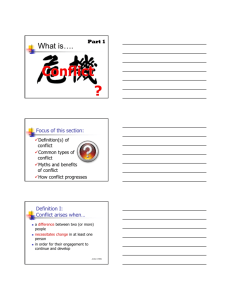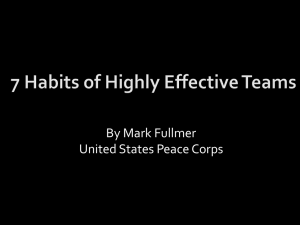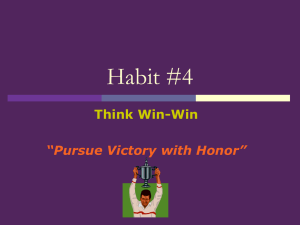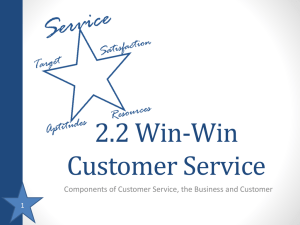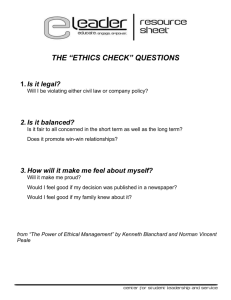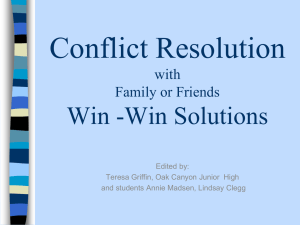Leader in Me: Lesson Plan Template
advertisement
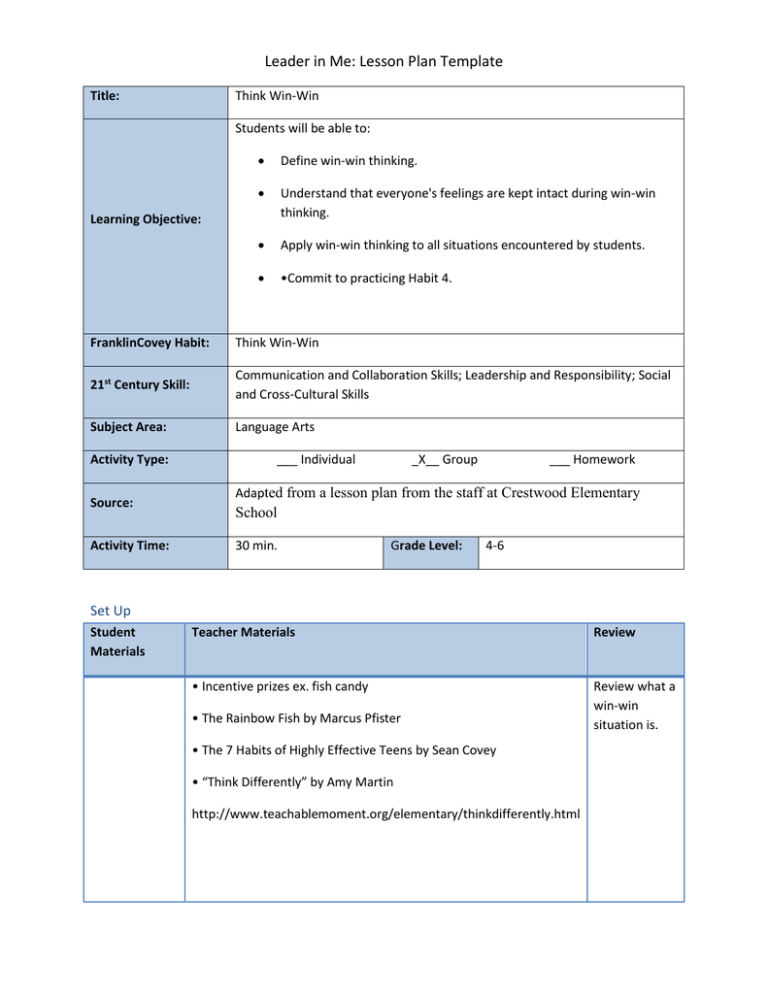
Leader in Me: Lesson Plan Template Title: Think Win-Win Students will be able to: Define win-win thinking. Understand that everyone's feelings are kept intact during win-win thinking. Apply win-win thinking to all situations encountered by students. •Commit to practicing Habit 4. Learning Objective: FranklinCovey Habit: Think Win-Win 21st Century Skill: Communication and Collaboration Skills; Leadership and Responsibility; Social and Cross-Cultural Skills Subject Area: Language Arts Activity Type: Source: Activity Time: ___ Individual _X__ Group ___ Homework Adapted from a lesson plan from the staff at Crestwood Elementary School 30 min. Grade Level: 4-6 Set Up Student Materials Teacher Materials Review • Incentive prizes ex. fish candy Review what a win-win situation is. • The Rainbow Fish by Marcus Pfister • The 7 Habits of Highly Effective Teens by Sean Covey • “Think Differently” by Amy Martin http://www.teachablemoment.org/elementary/thinkdifferently.html Introduction 1. Have two or three students enact a situation in front of the class. For example, one scenario could involve games at recess: The boys want to play basketball and do not want the girls to play. Encourage the students in the role-play to show with their bodies and voices what would happen. You may want to prompt them with setting up the scene, such as, "the boys have been playing basketball every day, but the girls are feeling left out. One day the girls decide to try to play." After the students role-play the situation, solicit from the students what would happen if the boys won and the girls lost? And what would happen if the boys lost and the girls won? How might both sides lose? How might both sides win? 2. Try to encourage multiple solutions, such as: The boys and girls could take turns each day. Or they could split the court. Or both girls and boys could play on equally divided teams. Explain that these solutions allow both parties to get what they want without feeling sad and disappointed. Have the students role-play the various outcomes. Ask, did the characters get what they wanted? How are they feeling? 3. Create a chart to visually represent how conflicts can turn out. Group A gets what they want Group A does NOT get what they want Group B gets what they want Win - Win Win - Lose Group B does NOT get what they want Lose - Win Lose - Lose Activity 1. Win-win thinking is not self driven. It is based on the idea that everyone’s opinions and feelings need to be considered. Then a plan needs to be formulated so everyone feels good about the outcome. This could be as simple as choosing what game to play with a friend or as difficult as deciding to give a treasured pet away. You are finding a way to choose outcomes that work for both parties involved. Everyone comes away feeling good about what has happened in a situation. 2. Read: The Rainbow Fish by Marcus Pfister. Discuss how the fish felt in the beginning of the story. Then how he felt after he shared his scales. 3. In groups of 2-4 have students create a PMI chart to decide the pluses, minuses and interesting facts that the fish could have gone through to make the decision of sharing his scale. Share the results with the class. PMI CHART PLUS MINUS INTERESTING FACTS Wrap Up Review what a win-win situation in the classroom might look like. Assessment Students will have one week after lesson is presented to write an example of how they engaged in a winwin situation with someone during the week in their agendas. Five people will be chosen to tell about their experience orally. Look for people using win-win strategies for a chance to win a “Covey Habit Prize” of whatever the teacher uses as an incentive for following through with the Covey Habit lessons. Extensions & Integrations As a writing journal activity have students write about a time when they had a win-win experience. In pairs have students share their entry. Discuss how thinking win-win would make a difference to your relationship with classmates, family and friends. Brainstorm ideas for preventing predictable problems. Role play different scenarios. (Note: When using real problems, it is important to not use the actual children involved in the problem to role-play. Having neutral children involved in the role-play will help to prevent the situation from becoming too heated. You can also give the children character name and/or use puppets to help students distance themselves from the actual problem.) Have a box in the classroom designated as the “win/win" box. Explain to the children that this is where they can put their concerns and together the classroom will try to find the win/win solutions. Pull applicable role-play ideas from the box and use the format above to try to solve them. With book buddies share an art activity where everybody wins. Each student draws or paints the front and back of a fish. Cut out tin foil scales for each pair to use for decorations. Put the two sides together, stuff with paper and staple for a 3-D effect.
